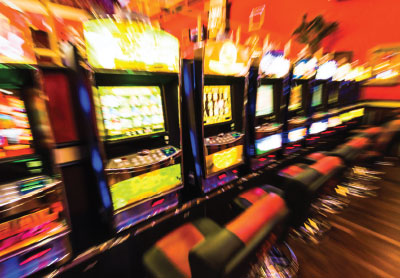Self-Injury Linked to Problem Gambling in Adolescents
Abstract
Youth who self-injured are more likely to report gambling before age 8 than their peers who do not self-injure.

Adolescents who self-injure are more likely to have problems with gambling than those who do not self-injure, a study in the Journal of Psychiatric Research suggests. Moreover, there may be a stronger relationship between problem gambling and engagement in solo, nonstrategic forms of gambling among those who self-injure compared with those who do not. Solo forms of gambling include gambling online or casino gambling using slot machines, rather than playing card or dice games with others.
“People tend to think of gambling as a peer-oriented process, where if you’re hanging out with friends who take risks, there may be pressure to engage in risky behaviors, including gambling. But those who engage in self-injurious behavior may be more isolative,” said study researcher Marc Potenza, M.D., Ph.D., a professor of psychiatry in the Child Study Center at Yale School of Medicine. Potenza is also the director of the Center of Excellence in Gambling Research and the Yale Program for Research on Impulsivity and Impulse Control Disorders.
Potenza and his colleagues analyzed data from 2,234 adolescents aged 14 to 18 years who participated in a statewide investigation of gambling and other risky behaviors among high school students in Connecticut. The adolescents answered a 154-item questionnaire designed to assess the adolescents’ gambling behaviors and motivations, family history of gambling and familial attitudes toward gambling, participation in extracurricular activities, and whether they experienced dysphoria or depression. Self-injury was determined by the question, “Have you ever intentionally cut your wrists, arms, or other areas of your body or done anything else to hurt yourself without intending to kill yourself?”

Adolescents who self-injure may be more isolative, which could explain the relationship between self-injury and gambling solo, says Marc Potenza, M.D., Ph.D.
Among all adolescents, those with problematic gambling were more likely than those with nonproblematic gambling to gamble for excitement, financial and social reasons, and escape. However, compared with youth who did not self-injure, those who did were more likely to report more permissive attitudes toward gambling, including believing that their parents were more accepting of gambling and may have gambling problems themselves. Consistent with these results, 38.2% of adolescents with problem gambling who self-injured reported gambling before 8 years of age, compared with 12% of adolescents with problem gambling who did not self-injure.
Potenza noted the possible relationship between the early age at which adolescents who self-injured began gambling and their family backgrounds.
“Youth with self-injurious behavior have been shown to often have difficult parent/child relationships, where there is less monitoring of the child by the parent, so it’s interesting [the youth] tended to see their parents as having more positive perceptions of gambling,” Potenza told Psychiatric News.
“This relationship between self-injury, family permissiveness, and age of gambling onset is notable with respect to how early we might want to intervene,” Potenza added. “It’s important to look at what the adolescents’ characteristics are so we can identify youth who may be in trouble and target interventions as appropriate.”
This study was supported by the National Institutes of Health, Connecticut Mental Health Center, the Connecticut State Department of Mental Health and Addiction Services, the Connecticut Council on Problem Gambling, and a Center of Excellence in Gambling Research Award from the National Center for Responsible Gaming (now the International Center for Responsible Gaming). ■
“Self-injurious Behavior and Gambling-related Attitudes, Perceptions, and Behaviors in Adolescents” is posted here.



